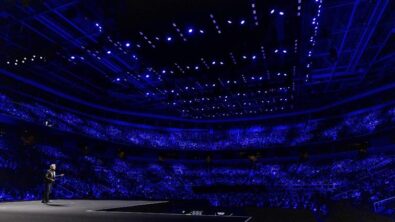Corporate
First in Flight: from Daedalus to the Wright Brothers
I was fortunate to attend an event with the famous American author David McCullough last month where he was talking about his new book “The Wright Brothers” at the Henry Ford Museum in Detroit. If yo...
I was fortunate to attend an event with the famous American author David McCullough last month where he was talking about his new book “The Wright Brothers” at the Henry Ford Museum in Detroit. If you’ve never been to this museum, it is truly an amazing place to visit for anyone interested in the history of innovation, and McCullough’s story of the persistence of the Wright brothers in their development of the first powered and piloted flight was an inspiring story to hear.

In Greek Mythology, Daedalus and Icarus escape from Crete by flying, but Icarus flies too close to the sun and falls to his death
You probably have a favorite “first in flight” story somewhere between Daedalus and the Wright Brothers. I was on vacation in Crete last month (the banks closed during our visit as a consequence of the Greek financial crisis, but don’t let that stop you visiting this beautiful island) and was hoping to research Daedalus as he and his son Icarus are closely associated with Crete. My questions at the Heraklion Museum were greeted with some amusement as I was informed that the story of Icarus’s fateful flight is pure mythology invented by the Athenians, and I would need to go to Athens to see some objects depicting the myth.
My favorite “first in flight” story is not well known outside of my home town of Malmesbury in Wiltshire, UK and concerns Eilmer the flying monk – a story that has historical documents to support it. In the introduction to his book David McCullough remarks, “Others devised wings of their own design and jumped from rooftops and towers”;

Eilmer holding a model of the wings that he used to fly from the tower of Malmesbury Abbey in the 11th Century
Eilmer falls exactly into this category. In the 11th Century he built a set of wings and launched himself off the tower of Malmesbury Abbey. History records that he flew (well, glided) quite well for a couple of hundred yards (the Abbey is on the top of a steep hill so that must have helped) but then caught by a gust of wind, he crashed and broke both his legs. Undeterred, he designed a tail to add to his wings to solve his stability issue, but the Abbott refused to let him fly again, so he spent his remaining days in the safer occupation of a scholar. In my role as a steward at the Abbey on Saturday mornings, it’s a great story to tell our visitors and point them to the stained glass window that celebrates Eilmer’s first and only flight.
Moving ahead 900 years, the question of stability was a big area for analysis and innovation for the Wright brothers. They studied birds at length and concluded that to be able to fly, they needed to be able to react to turbulence – they designed a twisting wing section to address the problem. They also built themselves a wind tunnel so they could analyze different wing sections and angles and how they behaved in varying wind speeds. Their first flight was competed on 17th December 1903 but was not widely recognized at that time. I was surprised to learn that they faced several years of skepticism in the USA before recognition of their achievements.

Orville Wright’s first powered flight at Kill Devil Hills on the North Carolina coast 17th December 1903
At the end of his talk David McCullough drew some lessons for the audience from the Wright brothers’ success. They had no formal college education in science or engineering, but they had a deep and wide curiosity that, coupled with access to an excellent public library in Dayton, Ohio, enabled them to contribute hugely to the genesis of aeronautical engineering. Self-reliance was another of their attributes.A government funded project that was running at the same time cost $70,000 and was a complete failure. In comparison the Wright brothers’ total expenses for the period from 1900 to 1903 when they developed the Flyer (including costs for materials and for traveling to and from Kitty Hawk North Carolina) were $1,000, money they raised from their bicycle business. I saw something of these same traits of independence and single-mindedness in the makers that I talked to on my visit to the i3 workshop in the same week I was in Detroit.

The Solid Edge Facebook page showcases many new product ideas and innovations submitted by our users
David McCullough concluded, “The love of learning should never leave us through life” – a message that we engineers can apply by expanding our horizons with interests and projects that take us out of our comfort zone. I see some great examples of this on our Solid Edge Facebook page where designers of all ages are submitting examples of their work. If you scroll through the diverse design ideas on that page you may see some seeds of significant new innovations and maybe discover a new Wilbur or Orville Wright.


